Displays used for AR (augmented reality) and VR (virtual reality) need to meet a series of specific requirements to ensure that users can get a high-quality, immersive visual experience. The following is a specific analysis of the requirements for AR/VR displays: 1.High resolution Importance: Resolution is a key factor in determining the clarity of the picture, which is particularly important for AR/VR devices, because low resolution may cause serious graininess in the picture, affecting the user's immersion and viewing experience. Specific requirements: AR/VR displays usually need to achieve higher resolutions, such as 4K or higher, to provide delicate and clear pictures. 2.High brightness Importance: Brightness determines the visibility of the display in a strong light environment, which is particularly important for outdoor or indoor environments with strong light. Specific requirements: AR/VR displays need to have high brightness to ensure a clear picture under various lighting conditions. 3.High contrast Importance: Contrast determines the difference in light and dark between the brightest and darkest parts of […]
2024-10-16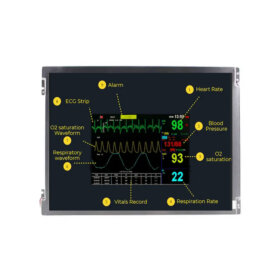
The backlight technology and driving mode of the display are important factors affecting the display effect and performance. The following is a detailed explanation of the backlight technology and driving mode of the display: Backlight technology Backlight technology refers to the light source technology used on the back of the display, which directly affects the brightness, color and contrast of the screen. Common backlight technologies include the following: CCFL backlight (cold cathode tube backlight): Backlight technology used in early LCD monitors. It can provide uniform backlight, but the power consumption is high, and with the development of technology, it is gradually replaced by LED backlight. LED backlight: It has become the mainstream backlight technology for modern LCD monitors. It is divided into two types: direct-type LED backlight and edge-type LED backlight: Direct-type LED backlight: The LED light is directly installed on the back of the LCD panel, which can provide a more uniform backlight. It is further subdivided into full array local dimming […]
2024-09-23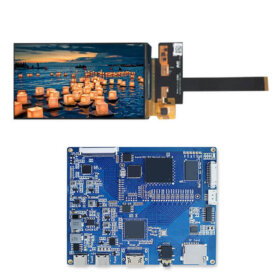
LCD screen driver boards are not all universal. Their universality is affected by multiple factors, mainly including the following aspects: Hardware compatibility Different models of LCD screens may require different driver boards, especially some LCD screens with special functions may require specially customized driver boards. Therefore, when choosing an LCD screen driver board, you need to ensure that it is compatible with the LCD screen used. Interface standard The interface standard of the LCD screen driver board is also a key factor affecting its universality. Currently, common LCD screen interfaces on the market include HDMI, VGA, DVI, etc., and different LCD screen driver boards may support different interface standards. Therefore, when choosing an LCD screen driver board, you need to determine whether it is universal based on the LCD screen interface used. Software compatibility Some LCD screen driver boards may require specific drivers to work properly, and the drivers under different operating systems may also be different. Therefore, when choosing an LCD screen driver […]
2024-08-15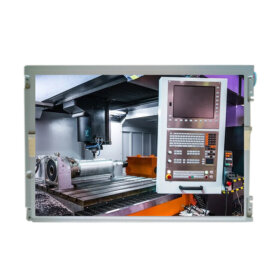
The number of pins on an LCD screen is not necessarily better, but needs to be determined based on specific application requirements and design considerations. First of all, the increase in the number of pins can provide more electrical signal transmission channels, thereby supporting higher resolution, refresh rate and more stable display effects. This is very necessary in some high-end display equipment or occasions that require high-quality display. However, as the number of pins increases, the complexity and cost of the circuit board will increase accordingly, which may lead to unnecessary cost waste. Secondly, too many pins may also increase the risk of signal interference. Since more pins mean more potential for electrical signal crossover and interference, especially when transmitting at high frequencies, this can lead to image noise, flicker, and other undesirable effects. Therefore, while increasing the number of pins, a series of shielding and isolation measures are also needed to ensure stable signal transmission. In addition, the number of pins […]
2024-05-14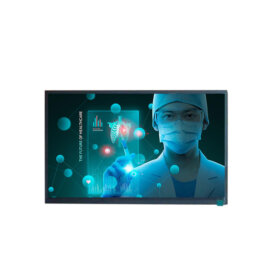
There are various types of touch screens, which can be distinguished mainly according to different classification standards. Classified by working principle and medium for transmitting information: Resistive touch screen: It uses pressure sensing for control. The main part is a resistive film screen that matches the surface of the display very well. This touch screen can be touched with any object, even while wearing gloves, and can be used for handwriting recognition. Capacitive touch screen: Sensing the touch behavior on the screen surface through electric field induction, including surface capacitive and projected capacitive. Projected capacitive touch screens use electrostatic field lines emitted by touch screen electrodes for sensing. Infrared touch screen: Arrange infrared transmitting tubes and infrared receiving tubes in the X and Y directions, corresponding to each other to form a horizontal and vertical infrared matrix. This kind of touch screen is cheap, but its frame is fragile, prone to light interference, and distortion in curved surfaces. Surface acoustic wave touch screen: It […]
2024-05-13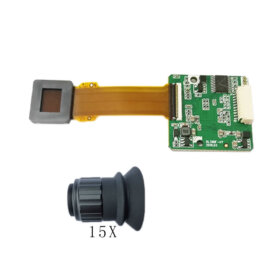
When choosing an LCD display in the AR (augmented reality) industry, there are many factors that need to be considered to ensure that the display can meet the needs of the AR device and the expectations of users. Here are some recommended steps and considerations: Clarify requirements: First of all, it is necessary to clarify the specific requirements of AR devices for LCD displays. This includes requirements for resolution, brightness, contrast, response time, viewing angle, power consumption, etc. Set reasonable performance indicators based on the purpose of the device and user experience needs. Understand LCD display technology: There are many types of LCD display technologies, such as TN (Twisted Nematic), IPS (In-Plane Switching), VA (Vertical Alignment), etc. Each technology has its unique advantages and disadvantages. For example, IPS technology has a wider viewing angle and better color performance, but may have a slower response speed; while TN technology has a faster response speed, but a narrower viewing angle. Understanding these technical characteristics will help you […]
2024-05-11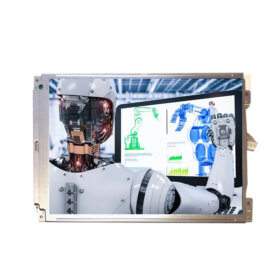
In the medical industry, choosing the right LCD display is crucial because it directly affects the clarity and accuracy of medical images, thereby affecting the doctor's diagnosis. Here are some key factors to consider when choosing an LCD display: Certifications and Standards: Make sure the LCD display you choose has certifications and standards for the medical industry, such as FDA (U.S. Food and Drug Administration) certification, CE (European Safety Certification), etc. Also note compliance with DICOM (Digital Imaging and Communications in Medicine) standards, which are critical to ensuring the accuracy and consistency of medical images. Functional Requirements: Choose a display capable of DICOM correction, which helps maintain image accuracy and consistency. There should be an optical sensor interface on the back of the display to allow access to the optical sensor for correction. Choose a medical display with a brightness constant device to ensure stability and brightness consistency over long periods of use. The display screen should be able to adapt to the medical […]
2024-05-10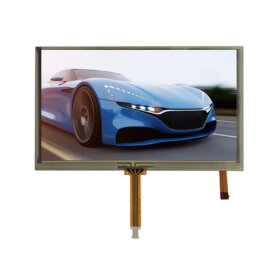
Among LCD displays, HD (High Definition) and FHD (Full High Definition) are two common resolution standards. Their main differences are resolution and image clarity. Resolution: The resolution of HD LCD screens is usually 720P, which is 1280x720 pixels. The resolution of the FHD LCD display is 1080P, which is 1920x1080 pixels. This means that an FHD display has around twice the number of pixels as an HD display, so it can display more details and clearer images. Image clarity: Because the FHD LCD display has a higher resolution, it can present more detailed and realistic images. In comparison, although the image on the HD LCD screen is relatively clear, it may be slightly inferior in detail. Scope of application: HD LCD displays are usually used in situations that do not require high image clarity, such as some ordinary TVs, computer monitors, etc. FHD LCD displays are more commonly used in situations that require higher image definition, such as high-end TVs, professional monitors, game consoles, […]
2024-05-09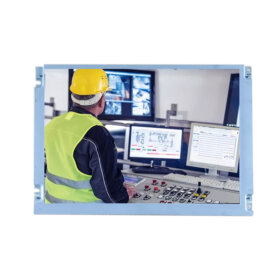
Monochrome LCD screens and color screens are two common types. They have obvious differences in display effects, usage scenarios and prices. Next, let’s learn more about the difference between monochrome LCD screens and color screens. Monochrome LCD screen and color screen display effect Monochrome LCD screens usually can only display one color, usually black and white or other single colors. This kind of screen is suitable for some simple display needs, such as digital display or text display. The color screen can display a variety of colors and can present more realistic and rich colors, which is suitable for scenes that need to display rich images and videos. Differences in usage scenarios between monochrome LCD screens and color screens Since monochrome LCD screens can only display a single color, they are widely used in some specific scenarios. For example, in the field of industrial control, monochrome LCD screens can clearly display various parameters and data, and can also be clearly seen in sunlight. The […]
2024-05-08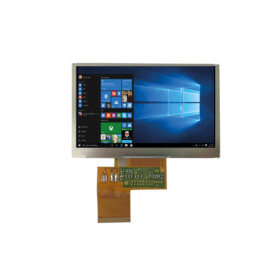
There isn't really a clear answer as to whether LCD or OLED is better for the eyes, as they can both cause similar effects on the eyes, especially when used for extended periods of time. However, some analysis can be made from their display principles and characteristics. The LCD screen (liquid crystal display) is illuminated by a backlight, and the light of the backlight is modulated through the liquid crystal layer for display. Since the liquid crystal layer cannot be completely closed, when the LCD displays black, some light will pass through the color layer, which may cause the screen to appear not deep enough in some cases. LCD screens have relatively even light and low flicker, so they may be considered a more comfortable display method in some situations. However, if the brightness is too high or too low, prolonged use may still cause eye fatigue. OLED screens (organic light-emitting diode displays) are self-illuminating for each pixel and do not require a […]
2024-05-07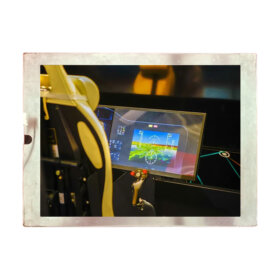
There are significant differences between high-brightness displays and TFT displays in many aspects. A high-brightness display screen is a display device that can produce high-brightness and high-contrast images, which is mainly achieved through the design of the backlight source, the material of the display screen, and the arrangement of pixels. Its technical features include HDR technology, wide color gamut display, adaptive refresh rate, etc., which enable the high-brightness display to present brighter and clearer image effects and meet users' high requirements for image quality. The bright display can effectively show details even in dark scenes, allowing users to get a more stunning visual experience when watching movies or playing games. At the same time, the high-brightness display has strong color expression and can present richer and more realistic colors. It is an ideal choice for professional designers, photography enthusiasts, or users who need to express colors accurately. The TFT display screen, also known as a thin film transistor display screen, is characterized by […]
2024-05-06
Which one is better, LCD screen or LED LCD screen, actually depends on the specific application scenarios and needs. Here are their respective advantages and disadvantages so you can make a more informed choice: Advantages of LCD screen (Liquid Crystal Display): Price: LCD screens are generally less expensive than LED screens because they cost less to manufacture. Resolution: The resolution of LCD screens is usually higher, especially in high-end products, and can provide clear and sharp image quality. Color performance: LCD screens are generally better in color performance, especially in grayscale, making them more advantageous in applications that require high color quality. Advantages of LED LCD screen (light emitting diode screen): Energy efficiency: LED LCD screens are more energy efficient because they use light-emitting diode technology and do not require an additional backlight. This means they are more energy efficient and produce less heat. Brightness: LED LCD screens are generally brighter, which makes them more advantageous for outdoor use or in bright light environments. Thin […]
2024-04-30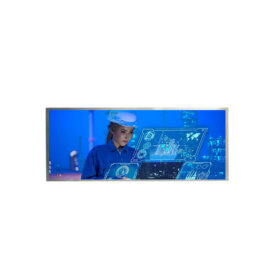
Maintaining LCD displays in industrial environments requires special attention to their fragile nature and the special challenges that industrial environments may bring. Here are some key maintenance steps and precautions: Clean it regularly: It is very important to clean your LCD display regularly, especially if fingerprints, dust or smudges have accumulated on the screen. When cleaning, use gentle gestures and avoid applying excessive pressure. At the same time, you should choose a special screen cleaning cloth for cleaning. This cloth has good water absorption and dust absorption, and can effectively prevent dust particles from scratching the LCD screen. Avoid humidity and liquids: Do not spray liquids directly on the screen to prevent liquids from seeping into the edges of the screen. If you need to clean the stains on the screen, you can spray the cleaner on the cleaning cloth and wipe it gently. In addition, the ambient humidity should be kept at a moderate level to prevent excessive moisture or dryness from causing damage […]
2024-04-29
The advantages and disadvantages of LCD display are analyzed as follows: Advantage: High definition and contrast: The LCD display has high brightness and contrast, which can display bright and clear pictures in various environments, with bright colors and a strong sense of hierarchy. Low power consumption, energy saving and environmental protection: Due to the use of advanced display technology and backlight design, the LCD display screen has relatively low energy consumption and can maintain a low calorific value even after long-term use, making it more energy-saving and environmentally friendly. Wide viewing angle and high reliability: The LCD display has a wide viewing angle, allowing users to get a better visual experience when viewing from different angles. At the same time, its stability and reliability are also high, and it can operate stably for a long time. Thin body, saving space: Compared with traditional CRT monitors, LCD monitors have smaller size and lighter weight, which can save valuable desktop space and make the office environment tidier. Low radiation, […]
2024-04-28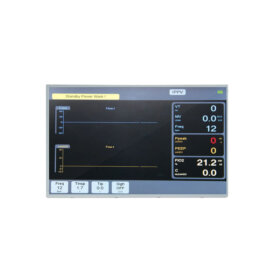
There are several major differences between industrial LCD displays and consumer displays. These differences are mainly reflected in the use environment, durability, design features, and lifespan. First of all, in terms of usage environment, industrial LCD displays are mainly used in industrial environments. These environments usually have harsh conditions, such as large temperature changes, strong vibrations, high humidity, and the presence of dust. In contrast, consumer displays are primarily used in indoor environments and rarely encounter such harsh environmental conditions. Secondly, in terms of durability, industrial LCD displays are usually designed to pay more attention to durability because they need to work in harsh environments. They use special materials and engineering to withstand challenges such as environmental changes, vibration, humidity and dust, resulting in stable operation over time, reducing the need for maintenance and replacement. Consumer displays have relatively low durability requirements. Furthermore, from the perspective of design characteristics, industrial LCD displays usually have the ability to operate in a wide temperature […]
2024-04-26